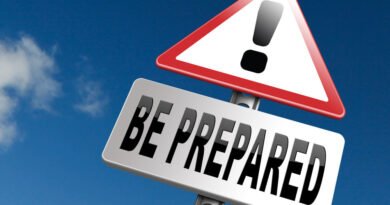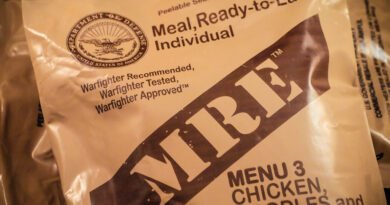How To Setup Long Term Food Storage At Home For Emergencies
When it comes to emergencies, you must have long term food storage you can depend on. If you don’t have one set up yet, our article today may help you get started.
Prioritizing Long Term Food Storage at Home
It has been an exceptionally long time since the average American has concerned themselves with the scarcity of food on market shelves. It’s something that generations of people have lived without. Suddenly, we are seeing empty shelves and people are concerned.
What can be done to solve this? Is there an answer that will help you sleep at night during all the chaos?
I remember the first buckets of long-term food storage I stacked in my own home. There was a remarkably interesting feeling that came from that.
It was like an exhale but one that comes from the soul. There was this existential weight lifted because I knew that we had food even in the worst-case scenario!
You can achieve this, too. You are going to need a few things to make this work.
Store Bought VS Homemade
View this post on Instagram
There are companies that can take care of your long-term food storage needs with the press of a button. You can literally buy a years’ worth of food for you and yours, right now! Of course, there are some drawbacks to that.
They choose your menu and the product can never really be inspected until you need it most! So, you must have some faith in that company.
Maybe, you are a Sam’s Club member and you wanna turn that 50lb bag of rice (COST $17) into your own pails of food storage. This process is simple enough. There are also some real benefits to knowing how to do this yourself.
Particularly, in times of disaster. These companies that pack emergency food get hit hard and they can run out of things.
DIY Setup Long Term Food Storage
To set up your own long-term food storage system at home you are going to need five important things:
1. The Food
Shelf-stable foods are what you’re after here. If you are bucketing these foods yourself, you will want to buy them in bulk. If you can purchase from a club membership or a friend in the restaurant business this will be the most cost-effective means.
- Flour
- Cornmeal
- Rice
- Beans
- Salt
- Sugar
- Spices
- Oats
- Hard Red Wheat
- Lentils
These are all examples of great long-term food storage items.
2. Mylar Bags
The Mylar bag is a bag that you heat seal and prevents exposure to the outside work. A high mil Mylar bag can be great protection from the outside world.
These bags can be a little expensive so shop around. They are necessary for long term food storage.
Mylar bags are heat-sealed so once you have food and oxygen absorbers inside you can use an iron or hair straightener to seal them.
3. Oxygen Absorbers
Once you have your Mylar bags filled, you’re going to want to add an oxygen absorber or two based on the quantity and type of food you are storing.
The importance of the oxygen absorber is that it literally steals oxygen from the enclosed environment it’s in. This is particularly important because it helps with things like damaging oxidation which occurs with everything on the planet.
Grains are also packed with a certain number of bug eggs and larva. This simply cannot be avoided.
Things can be washed and sieved but some eggs just make it through. If you sit rice on the shelf too long, bugs will appear in the bag.
Once you introduce the oxygen absorbers those eggs never hatch and those bugs cannot survive.
4. 5 Gallon Buckets
Mylar is tough, but it can be damaged by dropping or maybe even consistent pests. If your bags are damaged, then you must get rid of the food inside of them. That is too much risk for a long-term food storage plan.
Instead, you want to either use a 5-gallon bucket to store your food or you want to pack up smaller Mylar bags in five-gallon buckets.
These buckets are like body armor for your long-term food storage. Don’t leave them out of the equation.
If you have a freak flooding in your storage location, your food will be safe. Even in a pest infestation, your food will not be targeted.
5. Rotating Stock
View this post on Instagram
Now that you have all this food stocked up in buckets, you need to label it and be sure that you include at least two important elements:
- What’s inside
- When it was packed
From there you will need to consider stock rotation. Building long term food storage is not just about the first round of food you buy. You will buy subsequent rounds of food storage and they will need to be stored, as well.
Also, you cannot take the new buckets and store them on top of or in front of the old. You must rotate the old to the front and put the new behind them. That is the key to rotating your food storage and making sure you eat through the oldest stuff first.
Have a Reliable Prepper Pantry
Long term food storage is no substitute for a strong prepper’s pantry. You want to have foods in cans and boxes that can be easier eaten and accessed on a regular basis. You can store up to years’ worth of food this way!
However, in a true collapse of the economy or the food supply, both of which could be on the horizon, you are going to want access to long term food storage that can feed your family for even longer.
This long-term food storage gives you the power of calories. The power of a full belly and you always want to be prepping from a position of power!
What is your fave go-to food in your long term food storage pantry? Care to share with us in the comments section!
Up Next:
- How To Best Store Food For The Long-Term
- 9 Survival Foods You Should NOT Store Long Term
- 13 Dried And Canned Foods With The Longest Shelf Lives



